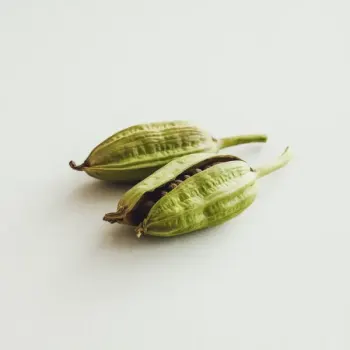


Seeds
Cardamom seeds can be bought separately, usually after being removed from the pod. They are often used in recipes that require a stronger flavor.
Ground
Ground cardamom is made from crushed seeds and is convenient for quick use in recipes, although it may lose its potency faster than whole pods or seeds.
Whole pods
Cardamom can be purchased as whole pods, which contain the seeds. The pods can be used whole or split to release the seeds for grinding.
Decorticated
This form of cardamom has the seeds removed from the pods and is sold without the outer shell, saving time for cooks who prefer to grind their own.




whole pods: Spice Island
ground cardamom: McCormick
decorticated seeds: Frontier Co-op

Grinding: For the freshest flavor, grind cardamom seeds just before use. Remove the seeds from the pods and use a mortar and pestle or a spice grinder to create a fine powder. This is especially important in baking, where the full flavor of the spice is desired.
Infusing: Cardamom can be used to infuse flavor into liquids. Add whole or crushed pods to milk, cream, or water for making teas, custards, or rice dishes. Simmer the liquid with the cardamom for a few minutes, then remove the pods before using the liquid in your recipe.
Toasting: Toasting cardamom pods in a dry skillet can enhance their flavor. Heat the pods over medium heat until they become fragrant, which typically takes a few minutes. Be careful not to burn them, as this can create a bitter taste.



